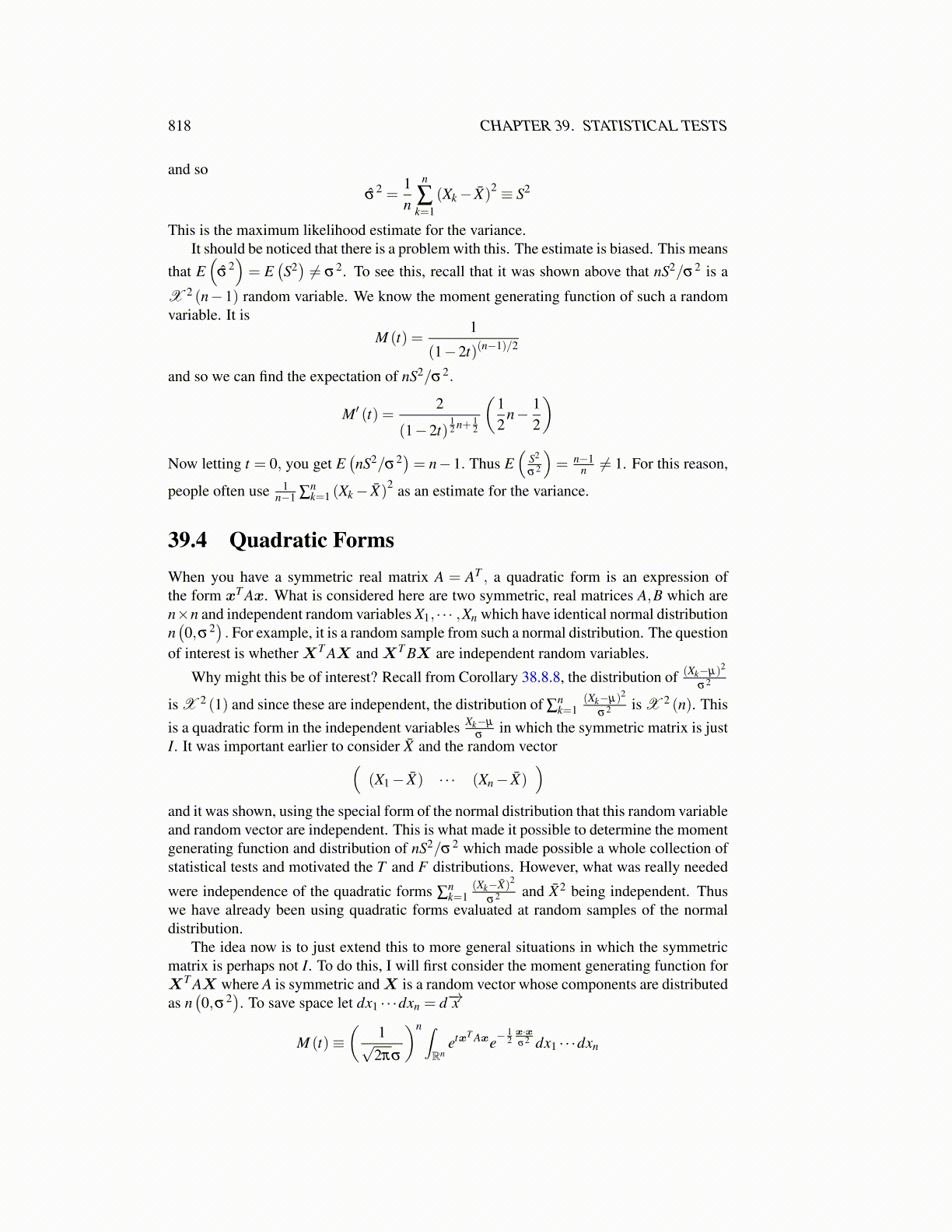
818 CHAPTER 39. STATISTICAL TESTS
and so
σ̂2 =
1n
n
∑k=1
(Xk− X̄)2 ≡ S2
This is the maximum likelihood estimate for the variance.It should be noticed that there is a problem with this. The estimate is biased. This means
that E(
σ̂2)= E
(S2)̸= σ2. To see this, recall that it was shown above that nS2/σ2 is a
X 2 (n−1) random variable. We know the moment generating function of such a randomvariable. It is
M (t) =1
(1−2t)(n−1)/2
and so we can find the expectation of nS2/σ2.
M′ (t) =2
(1−2t)12 n+ 1
2
(12
n− 12
)Now letting t = 0, you get E
(nS2/σ2
)= n−1. Thus E
(S2
σ2
)= n−1
n ̸= 1. For this reason,
people often use 1n−1 ∑
nk=1 (Xk− X̄)
2 as an estimate for the variance.
39.4 Quadratic FormsWhen you have a symmetric real matrix A = AT , a quadratic form is an expression ofthe form xT Ax. What is considered here are two symmetric, real matrices A,B which aren×n and independent random variables X1, · · · ,Xn which have identical normal distributionn(0,σ2
). For example, it is a random sample from such a normal distribution. The question
of interest is whether XT AX and XT BX are independent random variables.
Why might this be of interest? Recall from Corollary 38.8.8, the distribution of (Xk−µ)2
σ2
is X 2 (1) and since these are independent, the distribution of ∑nk=1
(Xk−µ)2
σ2 is X 2 (n). Thisis a quadratic form in the independent variables Xk−µ
σin which the symmetric matrix is just
I. It was important earlier to consider X̄ and the random vector((X1− X̄) · · · (Xn− X̄)
)and it was shown, using the special form of the normal distribution that this random variableand random vector are independent. This is what made it possible to determine the momentgenerating function and distribution of nS2/σ2 which made possible a whole collection ofstatistical tests and motivated the T and F distributions. However, what was really needed
were independence of the quadratic forms ∑nk=1
(Xk−X̄)2
σ2 and X̄2 being independent. Thuswe have already been using quadratic forms evaluated at random samples of the normaldistribution.
The idea now is to just extend this to more general situations in which the symmetricmatrix is perhaps not I. To do this, I will first consider the moment generating function forXT AX where A is symmetric and X is a random vector whose components are distributedas n
(0,σ2
). To save space let dx1 · · ·dxn = d−→x
M (t)≡(
1√2πσ
)n ∫Rn
etxT Axe−12x·xσ2 dx1 · · ·dxn